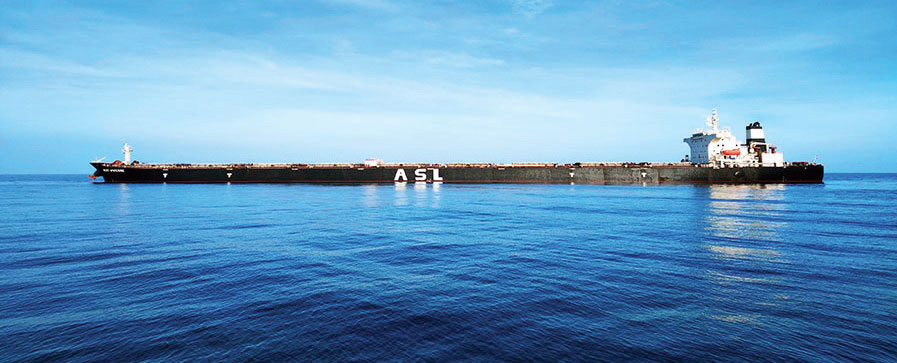Technology makes clean production processes available and steelmakers are deploying them.
Steel may not be an obvious choice to join this list. But steel is important in the construction of wind energy components and smart grids, so, it, too will benefit from these environmental and climate policies, especially with a new administration in Washington pushing them. And, in a trend that started to gain steam late last year, the global steel industry is now undertaking a revolutionary effort to minimize its own carbon footprint.

One of President Joe Biden’s first acts in office was to have the United States rejoin the 190-nation Paris Agreement—the one former President Donald Trump ditched in one of his first official acts. Over 60 countries—including the United Kingdom and almost all of the European Union—have since committed to carbon neutrality by 2050, and the U.S., under Biden, has recently joined that number. Biden’s policies is also one factor supporting continued high steel prices. (See box on page 10)
A recent report from the consultants McKinsey & Co. noted that the steel industry is facing “pressure to reduce its carbon footprint from both environmental and economic perspectives.” Beyond the Paris Agreement, the industry also faces “growing demand for carbon-friendly steel products” and “growing investor and public interest in sustainability.” Steel plants are good candidates for decarbonization, the report noted.
The steel industry currently is among the biggest industrial producers of carbon dioxide globally. Every ton of steel produces an average of 1.85 tons of carbon dioxide, about 8% of global carbon dioxide emissions. “Steel producers,” the McKinsey report concluded, “need to assess, evaluate, and decide on a technologically and economically viable way to decrease their carbon footprint.”
That effort is now being undertaken by technology concerns and steel companies around the world. The efforts fall into two buckets. The first involves reducing, but not eliminating, emissions in blast furnaces that use iron ore as the primary raw material, using carbon-capture technology or by replacing coal with cleaner-burning reducing agents. Reduction is the process of pulling oxygen out of iron oxide ore.

Carbon Neutral
The second involves technologies that have the potential to make steel manufacturing carbon neutral. These electric-arc furnaces typically use steel scrap as the raw material and electricity in the reducing process. One technology under development uses electricity to reduce iron ore.
In October 2020, Kobe Steel demonstrated a technology at the company’s facility in Hyogo Prefecture, Japan, that reduces levels of CO2 emissions from blast-furnace operations. The test verified that the reducing agent rate (RAR), a measure of the carbon fuel used in blast-furnace ironmaking, could be reduced by 20% using natural gas as the reductant.
That same month, Rio Tinto, one of the world’s largest mining and metals companies, and Nippon Steel Corporation, Japan’s largest steel producer, agreed to jointly develop decarbonization technologies to be integrated into both companies’ processes. “We began by examining our CO2 reduction scenarios and set goals for 2030 and 2050,” said Eiji Hashimoto, president of Nippon Steel Corporation.
NLMK Group, the largest steelmaker in Russia, completed an environmental upgrade in February of its blast-furnace infrastructure in Lipetsk in conjunction with a capacity expansion at that location. A system to capture the dust generated during hot metal production was deployed, ensuring a purification efficiency of 99.9% and reducing emissions by 200 tons per year. The new equipment also uses gas as a secondary energy source. After an upgrade of air heaters is completed in 2022, the reduction in gross emissions will total 7,700 tons per year, according to a company announcement.
In January, iron ore miner and steelmaker Cleveland-Cliffs Inc. announced that it is targeting a 25% reduction in greenhouse gas emissions by 2030. The company’s Burns Harbor, Indiana, facility will collaborate with two technology companies on a carbon capture project that will represent “an industrial-scale solution to capture greenhouse gases from blast-furnace operations,” said Cleveland-Cliffs chief executive Lourenco Goncalves.
The company also committed to evaluating the use of hydrogen in its new hot briquetted iron plant in Toledo, Ohio. Goncalves said Cleveland-Cliffs could replace up to 30% of the plant’s natural gas consumption with hydrogen with few modifications, a process which “could increase hydrogen usage up to 70% and reduce over one-million metric tons of greenhouse gas emissions per year.” The company, Goncalves added, will “evaluate partnering with hydrogen producers to replace natural gas when hydrogen becomes commercially available in significant quantities.”
Funding for Environmentally Friendly Operations
In December, United States Steel Corporation closed on $63.4 million of Environmental Improvement Revenue Bonds, the proceeds of which will partially fund work on a new low-emission electric-arc furnace at its Fairfield works. The new electric-arc furnace “recycles scrap steel as its primary feedstock and uses electricity for power,” said David Burritt, the company’s CEO.
Boston Metal, a company founded in 2012 by professors from the Massachusetts Institute of Technology (MIT), announced in January that it had raised $50 million in funding to accelerate industrial-scale deployments of its molten oxide electrolysis (MOE) technology. MOE reduces iron ore with the use of electricity, enabling a reduction process that eliminates CO2 emissions.
“Steel production has relied on the same basic formula for millennia,” said Tadeu Carneiro, CEO of Boston Metal. “Our mission is to supply emission-free steel on a global scale.” In February, the Brazilian multinational mining giant Vale S.A. announced it had invested in Boston Metal.
If the ultimate goal is for carbon-neutral steel production, the McKinsey study suggests that electric-arc furnaces represent the wave of the future, but “require the availability of scrap and direct reduced iron (DRI).” Blast furnaces using iron ore can be made more efficient using alternative reducing agents and carbon capture technology, the report noted, but won’t eliminate emissions. Boston Metal’s MOE process, which potentially eliminates emissions from the iron-ore reduction process, could shift that paradigm.




